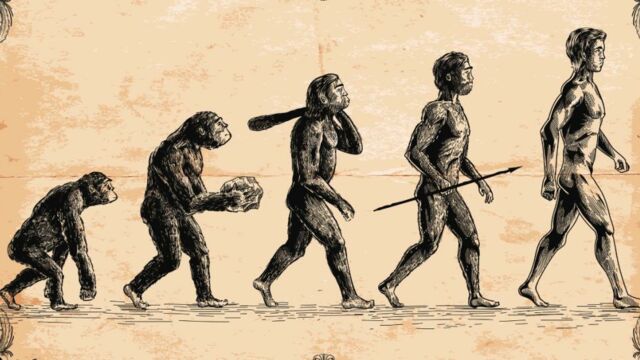It lived about 11.6 million years ago, during the Miocene period. Fossils of very ancient monkeys were discovered in the Hammerschmiede clay mine in Bavaria (Germany). The animal, called Danuvius Guggemos, lived long before humans separated from their cousins, chimpanzees and bonobos.
Discover our latest podcast
However, the analysis of well-preserved bones showed that this animal had an unusual mixture of anatomical characteristics. Attributes that tell us more about how humans started walking, the researchers say. They published their research in the Nature journal on November 6th.
Bones similar to those of humans
Most of the primate bones previously exhumed tended to be small or very fragmented, forcing scientists to fill in the holes with approximations. Limb and pelvic bones, in particular, are quite difficult to find. It is therefore complex to determine how humans moved from crouching to standing.
It is equally complicated to estimate whether they crawled, climbed or walked with their palms or fingers before standing up.
This time, palaeontologists discovered a multitude of jawbones, femurs, vertebrae and foot bones from a male, a juvenile and two females from the Danuvius Guggemos species. By assembling the puzzle, they were able to reconstruct a 30 kg skeleton, 3 feet high, with body proportions similar to those of a chimpanzee, but with less robust hands like those of an orangutang.
‘It was amazing for us to realise during the research process how similar some bones were to those of humans, as opposed to great apes,’ explained Madelaine Böhme to The Guardian, director of the study conducted by Eberhard Karl University in Tübingen, Germany. For example, the skeleton had a large chest and a curved S-shaped spine, like with humans.
Arms and legs equally
For at least four to five million years, humans and their now-extinct close cousins have been bipedal, that is, they stood on their two hind legs. However, it is difficult to reconstruct the evolutionary path that allowed us to anchor our feet on the ground. Danuvius Guggemos, therefore, offers a new avenue.
Indeed, the study of its bones showed that its hands were not strong enough to withstand movement, like gorillas. On the other hand, the long forearms, curved fingers and powerful thumbs show that they could hang, like chimpanzees. However, their hips, knees and feet had enough strength to maintain their weight: they could keep their body straight by pressing on the ground, instead of simply clinging with their arms. They thus used their lower and hind legs equally.
Researchers have nicknamed this approach the ‘Extended Danuvius.’ 'The kind of locomotion that is taking place is different from that of any known living being,’ enthuses Madelaine Böhme. The specimen found ‘shows that bipedalism progressed much earlier than expected,’ adds Tracy Kivell from the University of Kent (England). ‘Danuvius is not a hominin fossil (suborder of primates, to which the human species belongs, editor's note) but it helps to understand how humans have evolved.’















